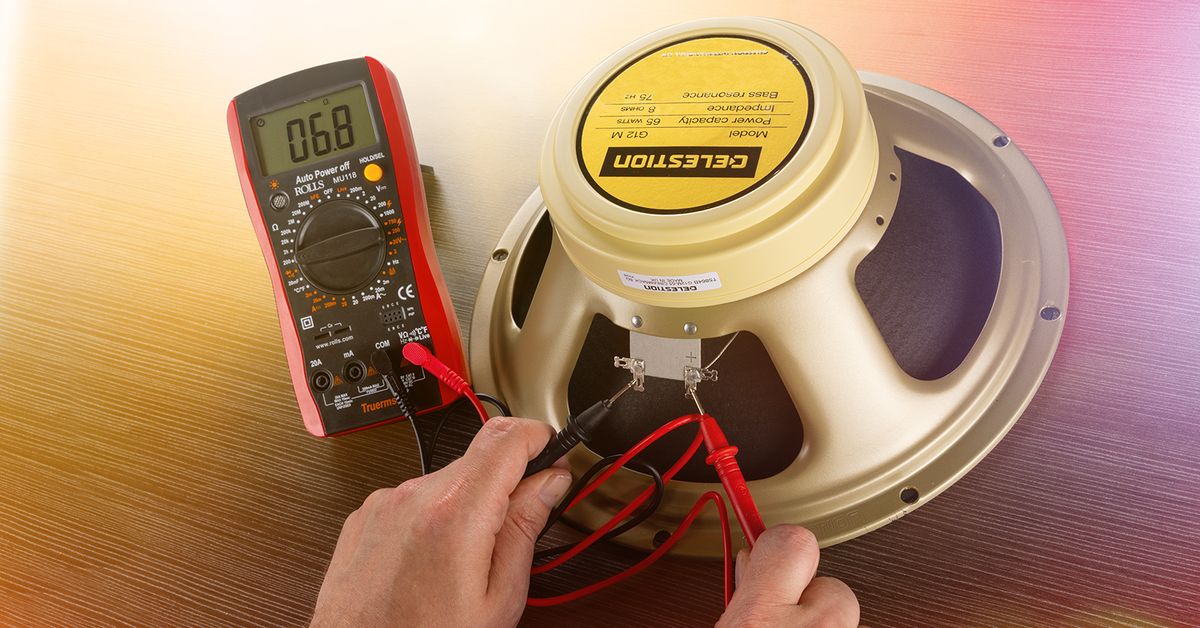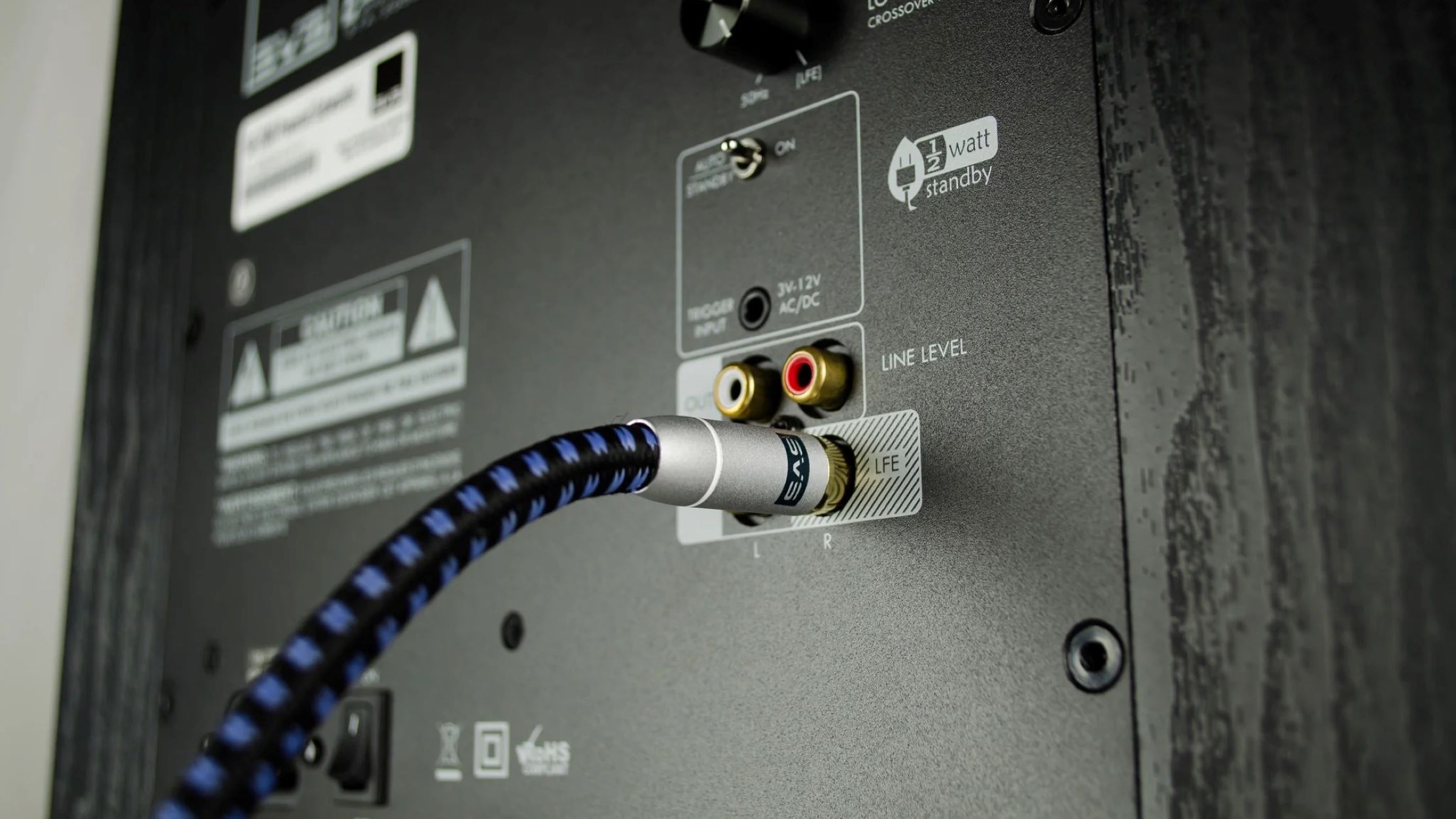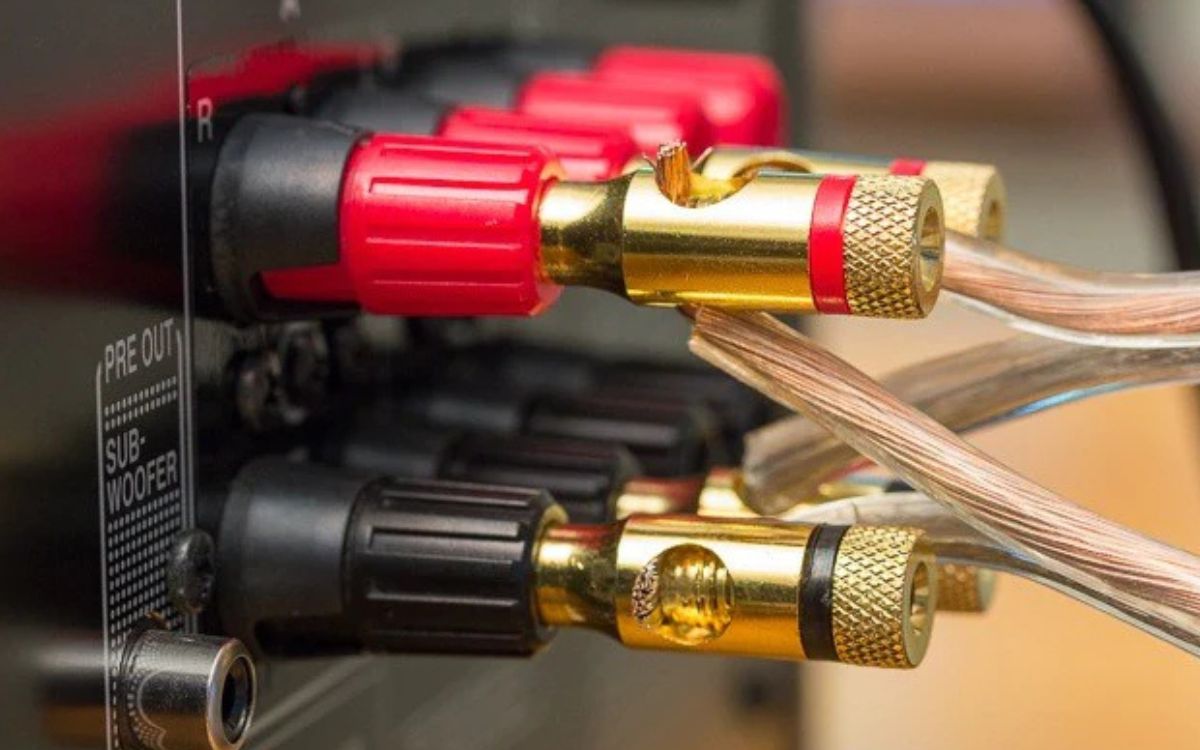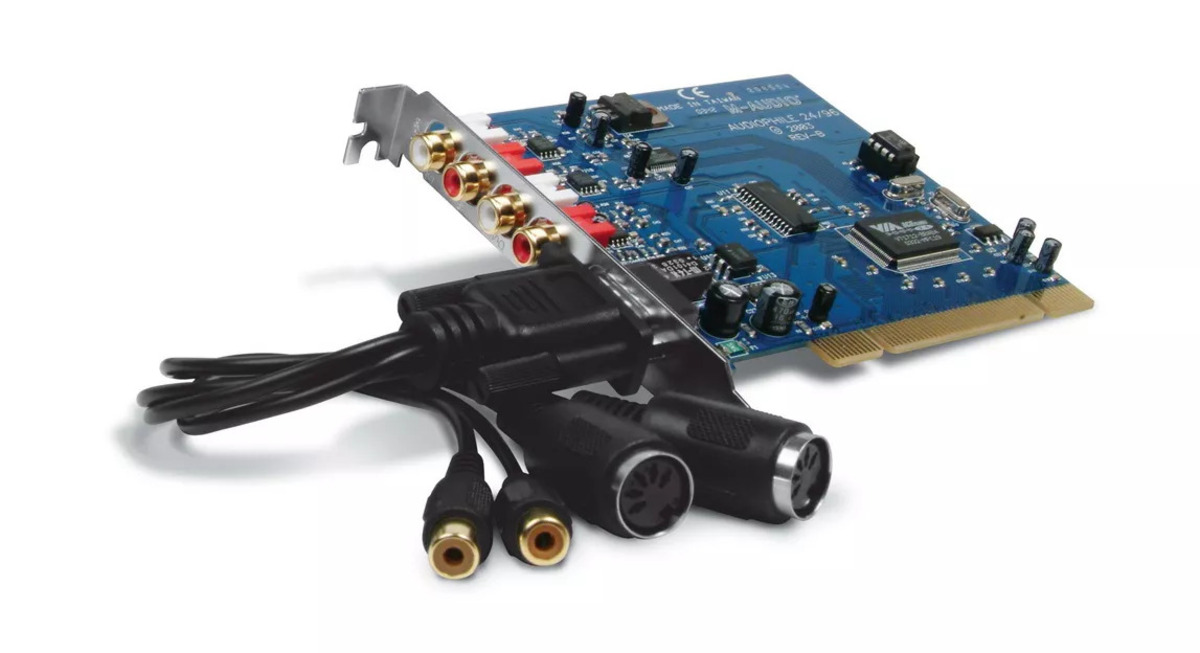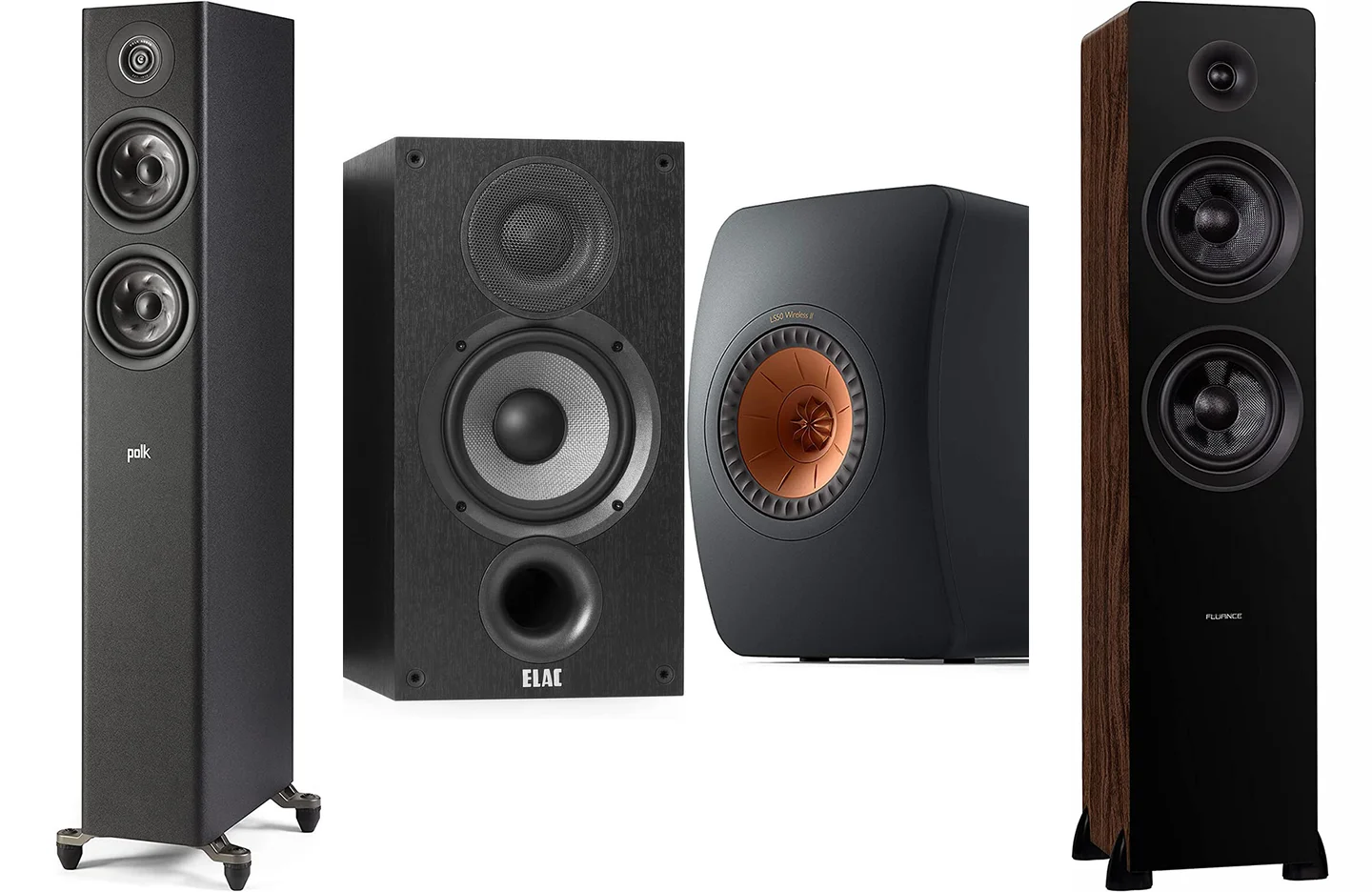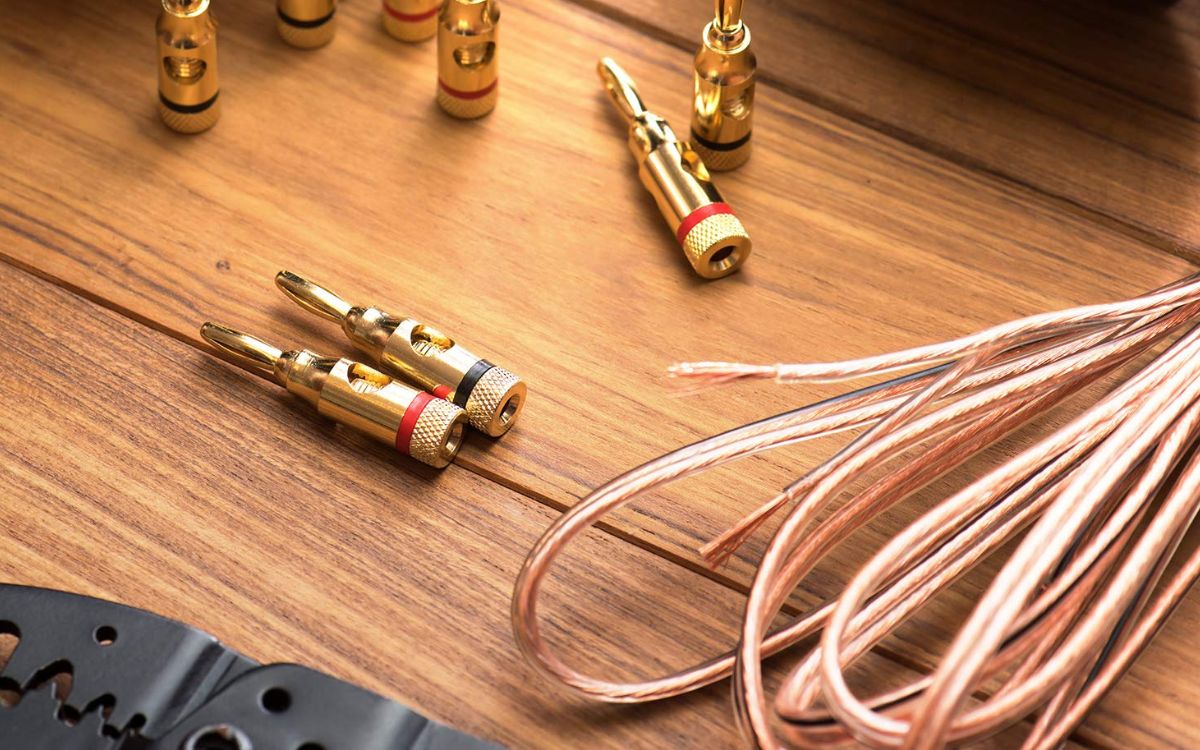Home>Production & Technology>Audiophile>How Audiophiles Were Fooled In A Speaker Wires Test


Audiophile
How Audiophiles Were Fooled In A Speaker Wires Test
Modified: February 18, 2024
Discover how audiophiles were deceived in a revealing test of speaker wires. Gain insights into the truth behind this controversial topic.
(Many of the links in this article redirect to a specific reviewed product. Your purchase of these products through affiliate links helps to generate commission for AudioLover.com, at no extra cost. Learn more)
Table of Contents
Introduction
Welcome to the fascinating world of audiophiles, where enthusiasts strive for the ultimate sound experience. These individuals are passionate about high-fidelity audio, and they invest significant time and resources to achieve sonic perfection. From selecting the right components to meticulously setting up audio systems, audiophiles leave no stone unturned in their quest for audio nirvana.
One aspect that has often captivated the attention of audiophiles is speaker wires. It is believed that the quality of speaker wires has a profound impact on the sound quality delivered by a system. Audiophiles have long debated the merits of different types of speaker wires, with some swearing by premium, high-priced cables and others arguing for more affordable options.
However, recent revelations have shed new light on this topic, causing a stir within the audiophile community. A test conducted by a team of experts has raised questions about the effectiveness of expensive speaker wires and the underlying beliefs that surround them.
In this article, we will explore the details of the controversial speaker wires test and delve into the implications it has on the audiophile community. By examining the results and analyzing the deceptive practices involved, we will uncover the truth behind the perceived benefits of expensive speaker wires. So, let’s embark on this journey and separate fact from fiction in the world of audiophile speaker wires.
Background of Speaker Wires
Before diving into the details of the speaker wires test, it is essential to understand the history and significance of speaker wires in audio systems. Speaker wires, also known as audio cables, are responsible for transmitting electrical signals from an amplifier or receiver to the speakers.
Initially, speaker wires were simply basic copper cables, chosen for their affordability and durability. As technology advanced and the demand for higher-quality audio increased, manufacturers and audiophiles began experimenting with different materials and construction techniques to optimize sound transmission.
This gave rise to a wide variety of speaker wire options on the market, ranging from the traditional copper wires to more advanced designs using materials like silver, gold, or even exotic alloys. Proponents of premium speaker wires claim that these alternatives offer superior conductivity and reduce signal loss, resulting in improved sound quality and enhanced audio reproduction.
However, the effectiveness of expensive speaker wires has been a topic of much debate and skepticism among audio professionals and scientists. Critics argue that the properties of speaker wires have minimal impact on sound quality, as long as the wires are of sufficient gauge and properly connected.
Despite the ongoing controversy, the audiophile industry thrives on the idea that better materials and construction techniques in speaker wires can make a significant difference in audio performance. This belief has led to the emergence of an extensive market for high-end speaker wires, with prices ranging from hundreds to thousands of dollars per meter.
Many audiophiles invest substantial sums of money in premium speaker wires, believing that these expensive cables will unlock the full potential of their audio systems. However, the recent speaker wires test seeks to challenge these long-held beliefs by evaluating the actual impact of different speaker wire options on sound quality.
Now that we have established the background of speaker wires and the ongoing debates within the audiophile community, let’s delve into the specifics of the controversial speaker wires test and its implications.
The Audiophile Community
The audiophile community is a passionate group of individuals who share a common love for high-quality audio reproduction. These enthusiasts are driven by a desire to experience music and sound in its purest and most immersive form. They invest considerable time, effort, and resources into building and fine-tuning their audio setups, seeking to recreate a lifelike and emotionally engaging listening experience.
Audiophiles are known for their meticulous attention to detail when it comes to audio equipment. They carefully select components such as amplifiers, speakers, DACs (digital-to-analog converters), and of course, speaker wires. These individuals believe that every element in the audio chain can have a discernible impact on sound quality, and they strive for perfection in each component.
Not only do audiophiles focus on equipment, but they also explore the science behind audio reproduction. They often delve into technical aspects such as impedance, frequency response, and signal-to-noise ratio to better understand audio systems and optimize their performance. This thirst for knowledge fuels their pursuit of audio excellence.
The audiophile community is a diverse group, ranging from hobbyists with modest setups to dedicated enthusiasts who spare no expense to achieve the best possible sound. They attend audio shows and exhibitions, exchange ideas on forums and social media platforms, and engage in lively debates about the merits of different audio equipment and techniques.
Part of the allure of the audiophile community is the sense of camaraderie and shared passion. Audiophiles avidly write and read reviews, discussing their favorite gear and sharing tips and tricks to enhance their audio setups. They find solace in the company of fellow enthusiasts who understand and appreciate their pursuit of sonic perfection.
However, as with any dedicated group, the audiophile community can also be prone to certain biases and beliefs, often driven by a mix of personal experiences, marketing influence, and subjective perceptions. This is where the controversy surrounding expensive speaker wires comes into play.
While many audiophiles firmly believe in the benefits of premium speaker wires, others question the validity of these claims. This division of opinions sets the stage for the speaker wires test that seeks to offer a fresh perspective on the topic and challenge the prevailing beliefs within the audiophile community. We will now explore the details of this intriguing test and the revealing results it produced.
The Speaker Wires Test
The speaker wires test in question was a carefully designed experiment aimed at evaluating the impact of different speaker wire options on sound quality. A team of audio professionals and scientists set out to conduct a blind listening test, ensuring unbiased results and removing any preconceived notions about the superiority of expensive speaker wires.
In this test, several sets of speaker wires were used, including both premium, high-priced options and more affordable alternatives. The wires were concealed behind a screen and labeled with randomized codes to prevent any visual bias. The test subjects, who were experienced audiophiles, were asked to listen to a selection of music played through various wire combinations.
The participants were given no information about the specific wire being used at any given time, and the order of the wire switch was randomized to avoid familiarity bias. Throughout the test, the listeners were asked to rate the sound quality on several aspects, including clarity, detail, dynamics, and overall enjoyment. Their feedback was recorded and later analyzed.
The results of the test were eye-opening. Contrary to popular belief, the expensive, high-end speaker wires did not consistently outperform the more affordable options in terms of sound quality. In fact, there were instances where the participants preferred the sound of the affordable wires over the premium ones.
These findings challenged the notion that expensive speaker wires automatically deliver superior audio performance. The test suggested that factors such as listener bias, psychological perceptions, and individual preferences play a more significant role in shaping the perceived sound quality of a system.
It is important to note that the aim of this test was not to discredit the more expensive speaker wires or invalidate personal experiences of audiophiles who claim to hear noticeable improvements with premium cables. Instead, it aimed to highlight the subjectivity of sound perception and the potential influence of psychological factors in shaping our auditory experiences.
While the test results may be surprising to some, they serve as a valuable reminder that audio enjoyment is subjective, and individuals should base their purchasing decisions on personal preferences, rather than solely relying on price or marketing claims. Understanding this distinction can help audiophiles make more informed choices while building their audio systems.
The speaker wires test raises important questions about the placebo effect, confirmation bias, and the psychology of perception within the audiophile community. It challenges long-held beliefs and invites audiophiles to approach the topic of speaker wires with a critical and open mind.
Now that we have examined the test and its results, let’s dig deeper into the explanation behind this deception and the potential implications it holds for audiophiles.
Test Results and Analysis
The test results of the speaker wires experiment yielded intriguing insights into the perception of sound quality among audiophiles. While the results varied among participants, there were several key findings that emerged from the analysis of the data.
Firstly, there was no consistent preference for expensive speaker wires over more affordable alternatives. Some participants reported no discernible difference in sound quality between the different wire options, while others actually preferred the sound produced by the more affordable wires. These results challenged the commonly held belief that premium speaker wires automatically result in superior audio performance.
Furthermore, the analysis revealed that individual preferences and psychological biases played a significant role in shaping the listeners’ perception of sound quality. Some participants were influenced by their prior beliefs and expectations, leading them to perceive improvements with expensive wires even when there were none. These findings highlight the power of psychological factors in influencing our auditory experiences.
In addition, the test results showed that elements other than speaker wires, such as amplifier quality, speaker placement, and room acoustics, had a more noticeable impact on sound quality. This suggests that investing in these aspects may yield more substantial improvements in audio performance compared to simply focusing on speaker wires.
The analysis also pointed to the importance of unbiased listening tests in evaluating audio equipment. By conducting a blind test, where participants were unaware of the specific wire being used, the influence of visual bias was eliminated. This approach helped ensure more objective and reliable results.
It is worth noting that while the results of this specific test may challenge the perceived benefits of expensive speaker wires, they should not discount the subjective experiences of those who claim to hear improvements with premium cables. Individual preferences and the unique characteristics of audio systems can still lead to varying perceptions of sound quality.
Overall, the test results and analysis shed light on the complexities of sound perception and the influence of psychological factors in the audiophile community. They encourage audiophiles to approach the topic of speaker wires with a critical mindset and to prioritize factors beyond cables, such as proper system setup, room treatment, and fine-tuning.
Now that we have examined the test results and their implications, let’s explore the explanation behind the deception uncovered by this experiment and the potential impact it holds for the audiophile community.
Explanation of the Deception
The speaker wires test and its surprising results have raised questions about the underlying factors that contribute to the perceived differences in sound quality between speaker wire options. To understand the deception involved, it is crucial to examine the potential explanations for these perceived differences.
One significant factor contributing to the deception is the placebo effect. The placebo effect refers to the phenomenon where a person experiences a perceived improvement or benefit simply because they believe they are receiving a beneficial treatment or product. In the case of expensive speaker wires, the mere belief that they will deliver superior sound quality can lead some audiophiles to subconsciously perceive improvements, regardless of the actual differences in wire performance.
Confirmation bias also plays a role in perpetuating the deception. Confirmation bias is the tendency to selectively interpret or recall information in a way that confirms one’s preexisting beliefs or expectations. Audiophiles who firmly believe in the superiority of premium speaker wires may unconsciously seek out and interpret evidence that supports their beliefs, while disregarding or dismissing contradictory information.
Additionally, the influence of marketing and branding cannot be overlooked. Manufacturers of high-end speaker wires often invest in elaborate marketing campaigns that promote the idea of enhanced sound quality and auditory superiority associated with their products. These marketing efforts can contribute to shaping the perception and expectations of audiophiles, further fueling the belief in the effectiveness of expensive speaker wires.
Furthermore, the subjective nature of sound perception and individual preferences also contribute to the deception. Different listeners have different hearing sensitivities, preferences for certain types of sound signatures, and personal biases that influence their perception of sound quality. These individual factors can lead to variability in the perceived differences between speaker wire options.
The deceptive nature of the perceived differences in sound quality between speaker wires highlights the complexity of human auditory perception and the subtleties involved in evaluating audio equipment. It underscores the need for critical thinking and objective evaluation methods when assessing the impact of different audio components.
While the deception uncovered in the speaker wires test may challenge the beliefs of some audiophiles, it is essential to approach this information with an open mind. Understanding the psychological factors at play can help audiophiles make more informed decisions about their audio setups and focus on aspects that truly contribute to improved sound quality.
Now that we have explored the explanation behind the deception, let’s discuss the implications that these findings hold for audiophiles and their pursuit of audio perfection.
Implications for Audiophiles
The revelations from the speaker wires test have significant implications for audiophiles and their pursuit of audio perfection. These findings challenge long-held beliefs and prompt a reevaluation of priorities in the quest for optimal sound quality.
First and foremost, audiophiles need to recognize that sound perception is highly subjective. Individual preferences, psychological biases, and listener expectations can greatly influence the perceived differences in sound quality. This understanding prompts audiophiles to approach the topic of speaker wires with a critical mindset and to prioritize factors that have a more substantial impact on audio performance.
One of the key implications is that audiophiles should focus on optimizing other aspects of their audio systems that have a more profound influence on sound quality. Proper speaker placement, room acoustics, and amplifier quality, for example, play vital roles in achieving optimal audio performance. Allocating resources towards these elements can yield more noticeable improvements compared to exclusively investing in expensive speaker wires.
Furthermore, audiophiles should consider the principle of diminishing returns. While premium speaker wires may offer a marginal improvement in sound quality, they often come with exorbitant price tags. It is important to assess whether the incremental gains justify the significant investment. Exploring more affordable speaker wire options that still meet the necessary technical criteria can be a reasonable alternative for many audiophiles.
The findings also underline the importance of unbiased listening tests. Blind tests, where participants are unaware of the speaker wire being used, help remove visual biases and provide more objective evaluations. Audiophiles should utilize rigorous testing methods to assess the impact of different audio components and make informed decisions based on the results.
Additionally, the speaker wires test emphasizes the need to be critical of marketing claims and careful about the influence of branding. Manufacturers often employ persuasive marketing strategies to enhance the perceived value of their products. Audiophiles should approach product claims with skepticism and rely on reputable sources and objective evaluations when making purchasing decisions.
Overall, the implications for audiophiles are clear: focus on aspects of the audio system that have a substantial impact on sound quality, approach speaker wires with a critical mindset, and prioritize objective evaluations over subjective perceptions. By adopting these principles, audiophiles can make more informed choices and optimize their audio setups without falling prey to the deceptive beliefs surrounding expensive speaker wires.
Now that we have explored the implications of the speaker wires test, let’s conclude our discussion.
Conclusion
The speaker wires test has shed new light on the controversial topic of speaker wire effectiveness within the audiophile community. The results of the test, combined with the analysis of the data, challenge the widely held belief that expensive, high-end speaker wires automatically deliver superior sound quality.
It is crucial for audiophiles to recognize the subjective nature of sound perception and the potential influence of psychological biases and expectations. The test serves as a reminder that factors beyond speaker wires, such as amplifier quality, speaker placement, and room acoustics, play significant roles in shaping sound quality.
The deception uncovered in the test highlights the power of the placebo effect, confirmation bias, and marketing influence in shaping beliefs within the audiophile community. These findings call for a critical approach and a focus on objective evaluations when making decisions about audio equipment.
Furthermore, the test results underscore the principle of diminishing returns. While premium speaker wires may provide marginal improvements, the substantial investment required should be assessed carefully. Exploring more affordable options that meet technical requirements can be a reasonable alternative for many audiophiles.
Ultimately, the implications of the speaker wires test encourage audiophiles to prioritize aspects of their audio systems that have a larger impact on sound quality. Proper setup, room treatment, and amplifier quality are just a few examples of areas that can yield more noticeable improvements.
By approaching the topic of speaker wires with a critical mindset, conducting unbiased listening tests, and prioritizing objective evaluations, audiophiles can make more informed decisions and optimize their audio setups. It is crucial to consider personal preferences and invest in aspects that truly contribute to the desired audio experience.
While the findings of the speaker wires test may challenge existing beliefs, they offer an opportunity for growth and a deeper understanding of the complexities of audio reproduction. By embracing these insights and continuing to explore the latest advancements in audio technology, audiophiles can continue their pursuit of sonic excellence in a more informed and pragmatic manner.
So, let us embark on this journey with open minds, eager to explore the world of audio and uncover the truth behind the perception of sound quality. A world where personal preferences and objective evaluations coalesce to create an exceptional listening experience for all enthusiasts.

